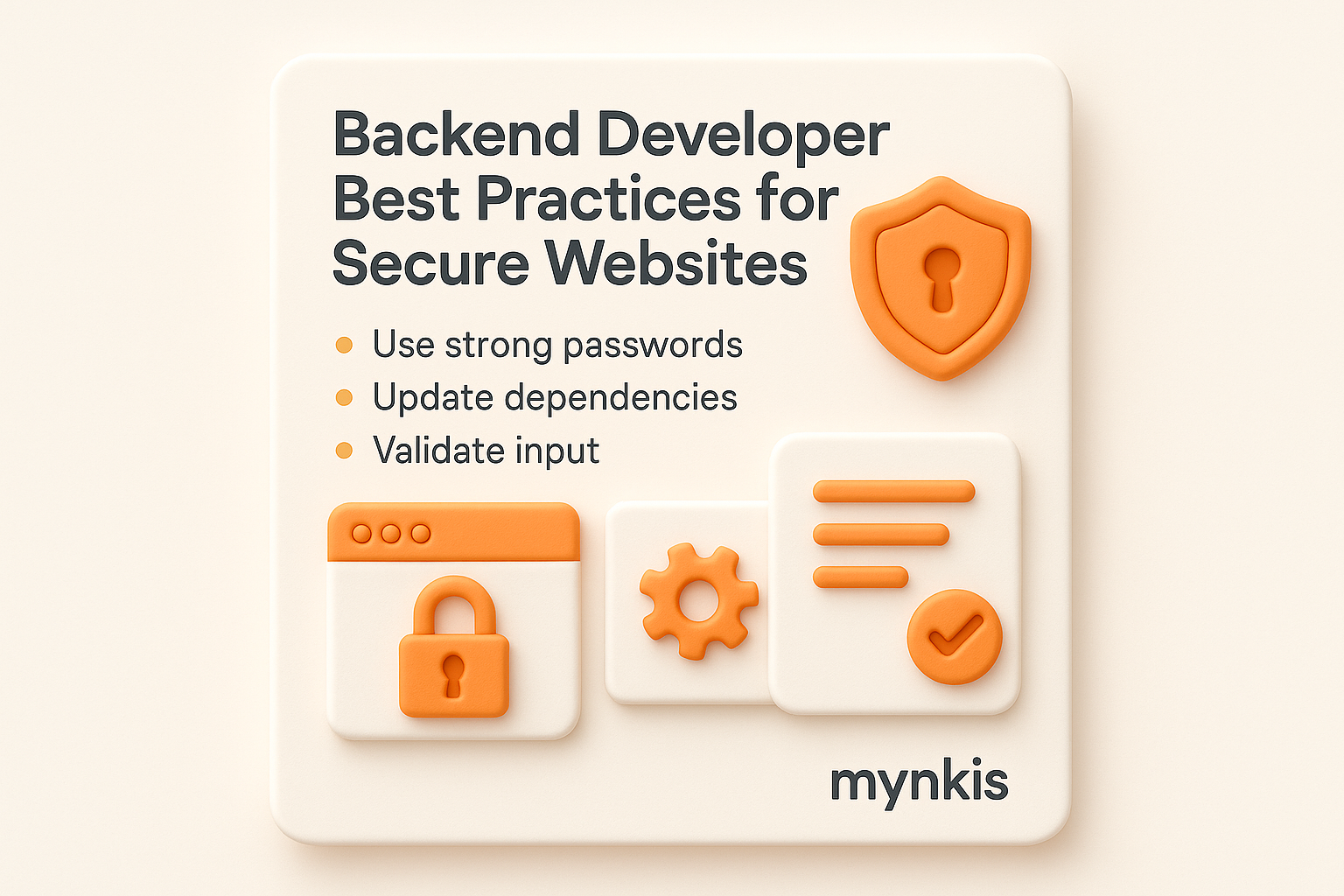Schedule a Demo
Securing your website's backend is not just about protecting data; it's about safeguarding your business's integrity and the trust of your users. In my work with operations managers, I've seen how a single security breach can damage a company's reputation and client relationships. It's crucial to implement best practices that not only defend against cyber threats but also build a robust foundation for your site's performance and user experience.
Keeping software and frameworks up-to-date is essential. In software development, vulnerabilities are continually discovered, and patches are released to address them. I always advise my clients to schedule regular updates and stay informed about the latest security patches for all systems involved in their web applications. This practice helps mitigate risks before they can be exploited.
Data validation is critical to prevent malicious inputs from causing harm. Sanitizing and validating every input received through your application can seem like overkill, but it's your first line of defense against SQL injections and cross-site scripting (XSS) attacks. I've encountered numerous instances where proper data validation alone prevented serious security issues.
Authentication isn't just about verifying users; it's about ensuring only authorized users can access sensitive data. Utilizing strong, multi-factor authentication (MFA) mechanisms and adopting OAuth and OpenID Connect are solid steps in this direction. In my experience, implementing these protocols significantly enhances site security without compromising user convenience.
Encrypting data both at rest and in transit is non-negotiable. SSL/TLS for communication and encryption algorithms like AES for storage can make all the difference. A study by Symantec emphasized the importance of encryption, showing how it drastically reduces the chance of data breaches.
APIs and microservices are the backbone of modern web applications, and their security is paramount. Properly securing APIs with measures like rate limiting, OAuth for authorization, and strong validation can prevent unauthorized access and abuse. I often recall a case where secure API practices not only protected the data but also improved overall application performance.
Continuous monitoring through logs and alerts is essential for early detection of suspicious activities. Setting up comprehensive logging systems helps in the swift identification and mitigation of security incidents. As Gartner reports indicate, having an effective incident response plan backed by detailed logs reduces the impact of any security breach.
Handling session data securely is as vital as managing user credentials. Sessions should be short-lived, tied to secure cookies, and invalidated upon user logout or after a period of inactivity. I've guided many projects toward implementing robust session management to prevent session hijacking and other related attacks.
The principle of least privilege minimizes risks by restricting system access to what is strictly necessary for users and processes. By applying this concept, you ensure that if one area is compromised, the potential for lateral movement by an attacker is minimized. This approach has been a cornerstone in securing the systems I've developed for clients.
Regularly auditing your backend for vulnerabilities and conducting penetration tests provides a proactive approach to security. Engaging third-party auditors or in-house experts who conduct these tests give you insights into potential weak points and how attackers could exploit them. Based on available research from OWASP, regular audits reduce the likelihood of undetected vulnerabilities leading to a breach.
Fostering a culture of security within your development team is essential. Regular training sessions on the latest security threats and best practices can make all the difference. Reflecting on my time leading development teams, I've seen how a well-informed team can significantly improve the security posture of a project.
Despite best efforts, sometimes breaches do occur. Having comprehensive backups and a disaster recovery plan can minimize downtime and data loss. In one project, our robust backup and quick recovery processes were the saving grace following an attack, enabling us to maintain business continuity with minimal disruption.
Secure coding practices are the cornerstone of any secure application. Using tools like static code analysis to detect potential security issues before deployment is a practice I always advocate. I've found that teams embracing a 'security-first' mindset in coding drastically reduce vulnerabilities.
While security is paramount, it should not hinder usability. Striking the right balance between secure systems and user-friendly interfaces is a challenge but not insurmountable. I've worked on projects where careful design and implementation allowed for high levels of security without sacrificing the user experience, thus maintaining high conversion rates on booking-enabled websites.
By integrating these backend developer best practices into your custom software development and enterprise web solutions, you ensure that your business's digital assets are protected against the evolving landscape of cyber threats. Adopting a holistic approach to backend security will not only enhance user trust but also contribute to the overall performance and conversion rates of your web applications. My journey through various projects reaffirms that security is not just a feature—it's a fundamental aspect of quality software development.
